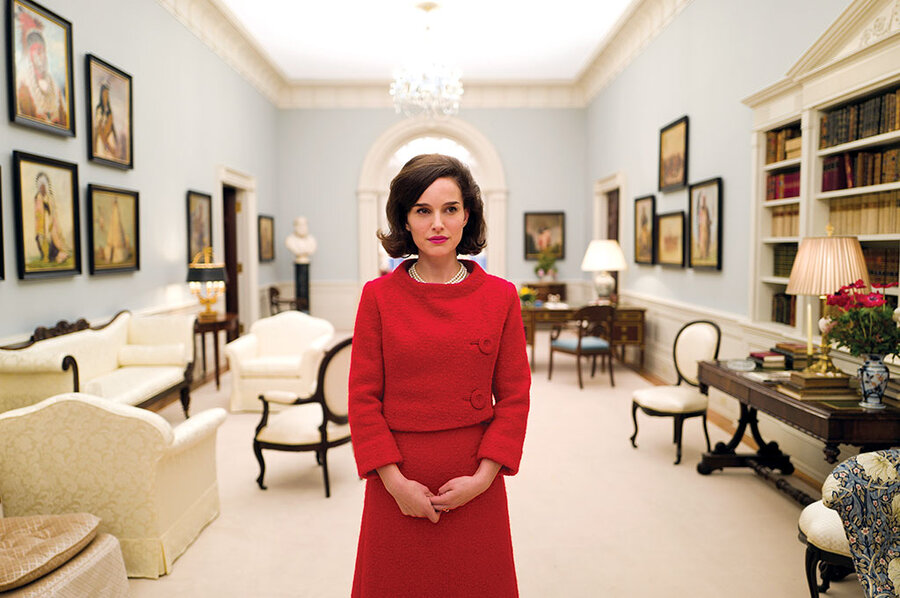'Jackie' is an unenlightening portrait of a famous Kennedy
Most biopics of famous people pretty much lay out a life as a straightforward linkage of events. And then there’s “Jackie,” Pablo Larraín’s mood-memory portrait of Jacqueline Kennedy during her time in the White House leading up to J.F.K.’s assassination and its immediate aftermath. Starring Natalie Portman, the film both supports and subverts the iconography that has grown up around the former first lady.
In such movies as “No,” which centered on anti-Pinochet political maneuverings, or his upcoming “Neruda,” about the Chilean poet Pablo Neruda, Larraín has fixated on the ways in which public perceptions clash with private realities. I’ve often found his movies to be fussed-up, with avant-garde posturings, and I’m afraid “Jackie” is no exception. This meta-biopic is more about Jackie Kennedy as perceived in the popular imagination than it is about the woman herself. And what Larraín has to offer on this score is not terribly enlightening.
Portman’s much-hailed performance strikes me as being essentially a phenomenal act of mimicry, with Larraín serving as puppet master. She captures Jackie’s mincing, tinkly speaking voice and brittle politesse, but some inner emotional core, even in Jackie’s most resonant moments, as in the weeks after the assassination, is lacking. Larraín is not particularly interested in Jackie as a flesh-and-blood woman, and this perhaps explains why Portman, scrupulous and touching as she sometimes is here, comes across as more of a hologram than a person. She seems disembodied – a Stepford first lady.
The back-and-forth editing of “Jackie” reinforces the film’s herky-jerky disorientation. Instead of allowing us to see the transformation of Jackie from White House icon to grieving widow, Larraín and his screenwriter, Noah Oppenheim, slice and dice that progression. They want us to feel as discombobulated as Jackie is after Dallas. Larraín’s artiness, if not Mica Levi’s eerie, ominous score, consistently lowers the film’s emotional temperature and undercuts Portman’s performance. Scenes, such as the one in which Jackie blankly looks on while Lady Bird Johnson, as the new first lady, samples fabrics for a White House makeover, are over almost as soon as they have begun. There is but one moment when I felt Larraín, to the film’s advantage, dropped his diversionary stylistic filigree: when Jackie, conferring with an Irish priest (John Hurt), worries that her compulsion to march in her husband’s funeral is more for her own benefit than for the world’s.
Larraín wants us to recognize that Jackie was not the fragile flower that so many have taken her for, that there was steel embedded in the silk. He re-creates the 1962 television special “A Tour of the White House with Mrs. John F. Kennedy” as a prime example of how she used her position to create a lasting legacy even while her husband was alive. She was a pioneer of political “branding.” To this end, Larraín overdoes the “Camelot” stuff by having Jackie obsessively play Richard Burton’s recording of the hit musical’s title song. This is hardly a masterstroke of biographical insight.
Jackie’s media savviness extends to the immediate aftermath of the assassination when, apparently left to her own devices in a deserted-looking compound in Hyannis Port, Mass., she parries the questions of Theodore H. White (identified in the film only as “The Journalist” and played by Billy Crudup), who is profiling her for Life magazine. She tells him right off the bat that she will be editing the conversation “in case I don’t say exactly what I mean.” Another time she tells him, after momentarily letting down her guard, “Don’t think for one minute I’m going to let you publish that.”
It’s understandable that, in these media-soaked times, a director of ambition would want to stretch the limits of film biography and present us with a famous person who is both more and less than her public image. But by losing sight of the person behind the image, he has simply created another false front. Grade: C+ (Rated R for brief strong violence and some language.)







